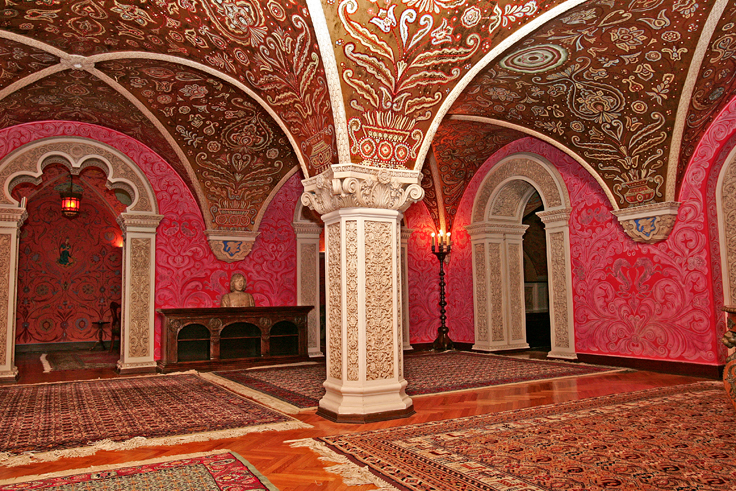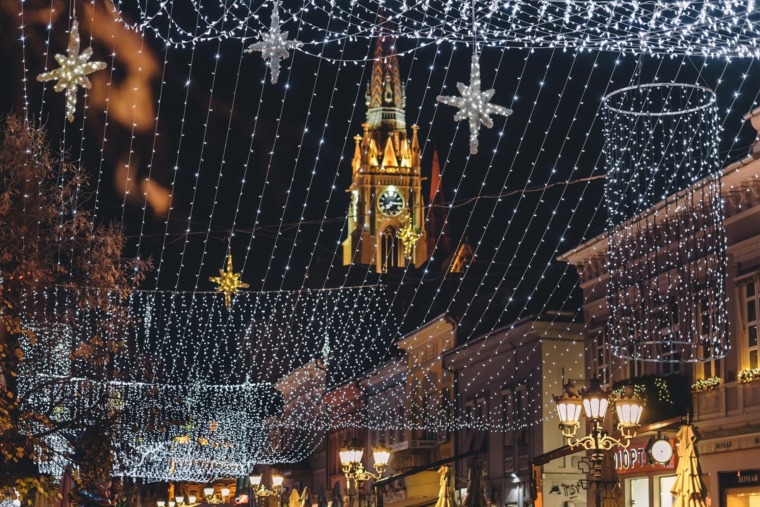

Belgrade experienced its most turbulent and intensive changes in an architectural sense between the two world wars. Almost overnight the city replaced its oriental contours with the modern look of a European capital. A major role in shaping the new face of Belgrade was played by Russian architects Verhovski, Baumgartner and primarily Krasnov.
“At the time of Alexander Karađorđević, a Russian student who was married to Alexander II’s granddaughter and was a great admirer of Nicholas II, immigrants from Russia found a new home in Serbia. The whole history of Serbian-Russian relations, which date back to the 13th century, are dominated by that time, that period of war and persecution, when refugees carried with them vivid memories of imperial Russia as a seed they were trying to save from the flames of the revolution”, reminds Mihail Genadijević Denisov, director of the Russian House in Belgrade.

Vladimir Albinović Majevski, a historian of the Russian emigration and contemporary events, notes that “Russians then entered the Serbian land unencumbered by quotas, visas, restrictions, passports and the like. This brotherly country welcomed the Russians close of themselves. They were not burdened with the formalities that existed when entering European and American countries. That should be remembered and recalled with gratitude…”
And the arrival of 44,000 Russian refugees in particular had enormous cultural, educational, scientific and social significance to Serbia at that time. Things become even clearer when one looks at the education of those Russian refugees in Serbia, especially when you consider how many illiterate people Serbia had at that time.
THE RUSSIANS ARE COMING
 “The activity of Russian directors, set designers, costume designers, opera singers and ballet artists in the interwar period, in national theatre institutions and the Russian theatre and opera societies and groups, marked and enriched the theatre, opera and ballet life of Belgrade and elsewhere in Serbia and the then Kingdom Yugoslavia. Russian ballerinas and ballet teachers – Klavdija Isačenko, Jelena Poljakova, Nina Kirsanova, Fyodor Vasilyev and Anatoly Zhukovsky – founded the ballet department at the Belgrade National Theatre. Also unforgettable are the great Russian stage designers Vladimir Žedrinski, Leonid and Rima Brailovski and Vladimir Zagorodnjuk,” says Denisov, noting that as many as 11 refugee Russian scientists were admitted into the Serbian Royal Academy: Anton Bilimovich, Vladimir Laskarjov Nikolai Saltikov, Yevgeny Spektorski, Fyodor Taranovski, Jakov Hlitčijev, Stjepan Kuljbakin, Vladimir Farmakovski Nikolai Pušin, Konstantin Voronjec and Georgiy Ostrogorski.
“The activity of Russian directors, set designers, costume designers, opera singers and ballet artists in the interwar period, in national theatre institutions and the Russian theatre and opera societies and groups, marked and enriched the theatre, opera and ballet life of Belgrade and elsewhere in Serbia and the then Kingdom Yugoslavia. Russian ballerinas and ballet teachers – Klavdija Isačenko, Jelena Poljakova, Nina Kirsanova, Fyodor Vasilyev and Anatoly Zhukovsky – founded the ballet department at the Belgrade National Theatre. Also unforgettable are the great Russian stage designers Vladimir Žedrinski, Leonid and Rima Brailovski and Vladimir Zagorodnjuk,” says Denisov, noting that as many as 11 refugee Russian scientists were admitted into the Serbian Royal Academy: Anton Bilimovich, Vladimir Laskarjov Nikolai Saltikov, Yevgeny Spektorski, Fyodor Taranovski, Jakov Hlitčijev, Stjepan Kuljbakin, Vladimir Farmakovski Nikolai Pušin, Konstantin Voronjec and Georgiy Ostrogorski.
KRASNOV – ONE DESTINY
One of the notable Russians in Serbia was architect Nikolai Krasnov (1864-1939). The doors of the Moscow School of Painting, Sculpture and Architecture were opened to the 12-year-old Nikolai in 1876. There are indications that the young, capable and diligent boy was helped by Sergei Mikhailovich Tretyakov, brother of the founder of the legendary Tretyakov Gallery in Moscow. It is assumed that the young Krasnov found himself on the southern coast of the Crimea thanks to the patronage of his famous countryman, entrepreneur and merchant Petar Gubonyin. It was only in 1887 that Krasnov became the chief architect of Yalta, the popular summer resort of the Russian Empire. Until 1913 Crimea received more than 60 diverse works of this architect, which represent a harmonious blend of modern style, with the artistic tradition of local architecture. The Academy of Arts in St. Petersburg selected Krasnov for academic architecture.
Architect Krasnov, like many others who did not accept the new government, was forced to leave Russia in 1919. After spending three years moving from Gallipoli to Malta, the Krasnov family finally arrived in Belgrade, at the invitation of the Government of the Kingdom of Serbs, Croats and Slovenes. Thus, Yugoslavia became a second home for this Russian academic of architecture. Moreover, in Serbia he was able to continue to engage in the work that he loved so much.
During the 1920s Nikolai Petrovich Krasnov worked on some very important public projects in Belgrade, such as the building of the Ministry of Finance, the estate of the Ministry of Forestry, agriculture and mining and the building of the State Archives. The strict academicism of these majestic buildings embodied the idea of strengthening Yugoslav statehood.
However, Krasnov worked on the renewal of the Ružica Church at Kalemegdan in a completely different manner, giving it a romantic “medieval” look and fitting it harmoniously into the monolithic fortified structure. Krasnov received two very important orders from the Royal Court: work on the interior of the Church of St. George at Oplenac and the villa of the Old Palace in Belgrade. He performed a series of art works on both buildings that were in accordance with the national architectural style of the buildings. Krasnov is also responsible for the interior of the building of the National Assembly in Belgrade.

From 1922 until his death he served as inspector of the Architecture Department of the Ministry of Construction. In short, this talented builder and man of extraordinary energy was just as highly respected and sought after during his life in emigration. He died in Belgrade on 8th December 1939 and was buried in the Russian part of Belgrade’s New Cemetery, next to the Iverski chapel, where he was sent off with song – rounding off an unusual story of a refugee, an artistic path and human destiny.
Compiled by D. MARKOVIĆ
Related Articles


Snow-Free Serbia Travel Ideas for 2026
December 17, 2025
What to Do with Kids in Serbia: Family-Friendly Holiday Ideas
December 14, 2025






